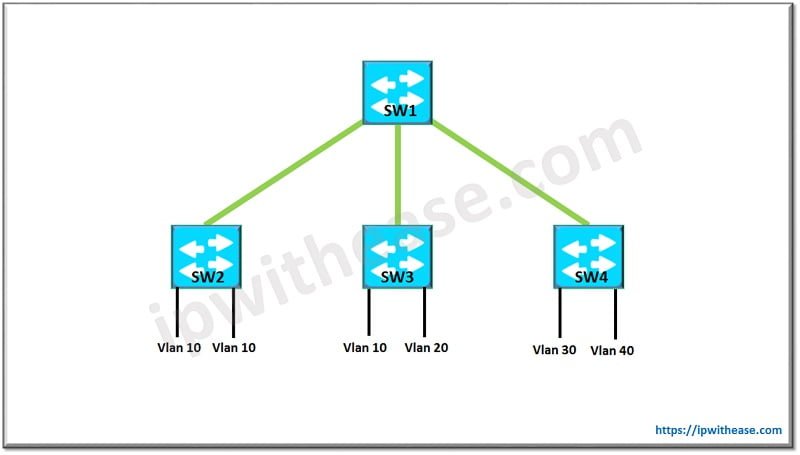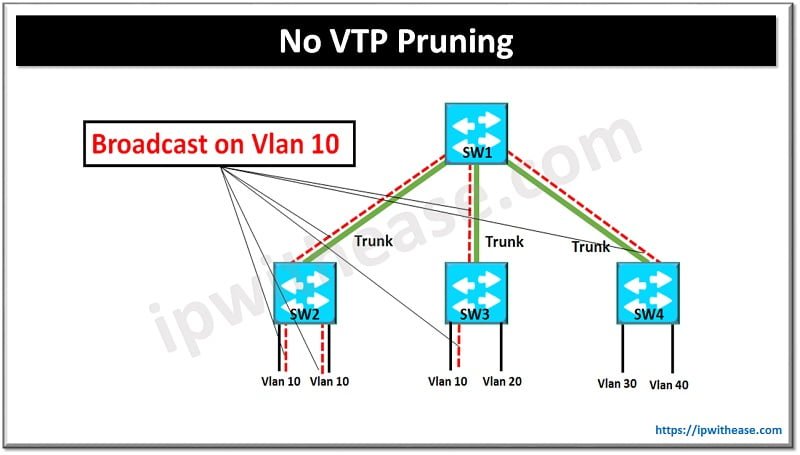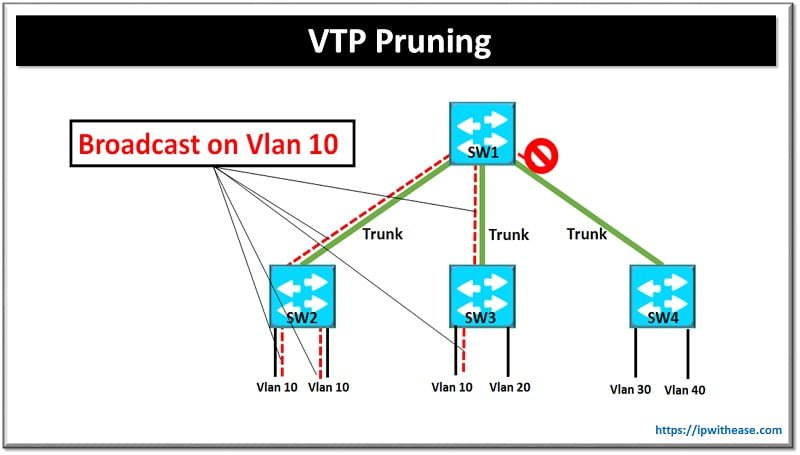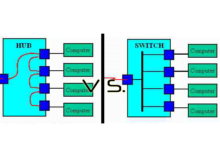Table of Contents
Understanding VTP Pruning
VTP Pruning is the key element of VTP (VLAN Turning Protocol). It help improves network performance and network bandwidth by decreasing unnecessary flooded traffic i.e. broadcast, multicast, unknown and flooded unicast packets. In normal operation, a switch needs to flood broadcast frames, multicast frames, or unicast frames where the destination MAC address is unknown to all its ports. If the neighboring switch doesn’t have any active ports in the source VLAN, this broadcast is needless and excessive undesirable traffic may create problems on the network.
This is disabled by default in Cisco switches. VTP pruning Cisco helps to send broadcasts only to those trunk links that actually needs the information i.e. with VTP pruning enabled, when the destination MAC address is unknown, frames are forwarded over a trunk link only if the switch on the receiving end of the trunk link has ports in the source VLAN pruning. It should only be enabled on VTP servers, all the clients in the VTP domain will automatically enable VTP pruning. VLAN 1 can’t be pruned because it’s an administrative VLAN.
All the version of VTP i.e. VTP version 1, VTP version 2 and VTP version 3 support VTP pruning. To enable VTP pruning on a Cisco IOS switch, use the VTP VLAN pruning configuration command. Once VTP pruning is enabled, you can optionally configure a prune eligible list if you want to limit the VLANs that can be pruned.
Example Scenario
A scenario will help understand the concept of VTP pruning in a more detailed way. Below is a setup of 4 Switches (SW1, Sw2, Sw3 and Sw4) with SW1 being the VTP Server and connecting to each Switch in a STAR topology over trunk links.Sw1 has configured 5 VLANs (VLAN 1,10,20,30 and 40) and the VLANs have been automatically configured via VTP on rest of Switches.

Assigned Access Ports
Each switch has access ports assigned as below –
- SW2 has 2 access ports both in VLAN 10
- SW3 has 2 access ports,1st in VLAN 10 and 2nd in VLAN 20
- SW3 has 2 access ports,1st in VLAN 30 and 2nd in VLAN 40
All the Switch to Switch connectivity is on trunk links with all VLANs allowed on trunk ports.
Below Diagram shows “no VTP pruning” is enabled on all the 4 Switches though all being members of same VTP domain.

No VTP Pruning
Now let’s say device connection of one of the access port of Switch 2 (SW2) sends broadcast. This broadcast will be received on following –
- All the Access ports and trunk ports of SW2 except the source port.
- SW1 receives the VLAN 10 broadcasts on trunk port connected to SW2 and forwards the same on trunk ports connected to SW3 and SW4.
- SW3 received the broadcast and forwards to a connected Access port on VLAN 10.
- SW4 received the broadcast on trunk port but does not forward to access port since no access port with VLAN 10 membership.

VTP Pruning Enabled
Now, after enabling VTP pruning on all the switches, let’s see what change happens from the previous scenario.
- Once it is enabled, the broadcast on VLAN 10 from SW2 is forwarded to SW1 however, it is not relayed to all trunk ports.
- Seeing that no Access port membership is there on SW4, the Broadcast of VLAN pruning is only relayed to trunk port of SW3 and not towards SW4.
In the Nutshell, VTP pruning saves the bandwidth and unnecessary flooding of links by not sending broadcast / unknown unicast traffic out of interfaces not required.
Continue Reading
VTP- How to Reset Revision Number
Are you preparing for your next interview?
If you want to learn more about VTP, then check our e-book on VTP Interview Questions and Answers in easy to understand PDF Format explained with relevant Diagrams (where required) for better ease of understanding.
ABOUT THE AUTHOR

You can learn more about her on her linkedin profile – Rashmi Bhardwaj



